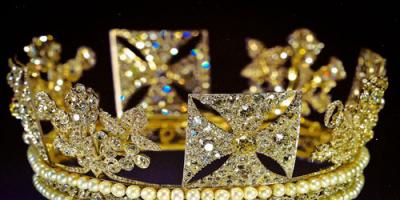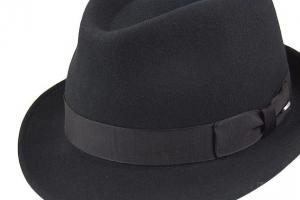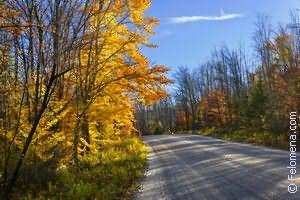- Landing: sowing annual seeds in the ground - in May, in a greenhouse - in mid-April, sowing perennial seeds for seedlings - in early March, transplanting seedlings into the ground - at the end of May.
- Bloom: from July to October.
- Lighting: bright sunlight, for some species partial shade is preferable.
- The soil: moist, loose, light, well-drained, not too fertile, neutral reaction.
- Watering: regular and moderate until the seedlings get stronger. Mature plants only need watering during drought.
- Feeding: complex solution mineral fertilizer, but only when grown in poor soil.
- Reproduction: seeds, cuttings and dividing the bush.
- Diseases: leaf spot, rust and fusarium.
Read more about growing coreopsis below.
Coreopsis flower - description
Coreopsis - rhizomatous herbaceous plants or subshrubs with branched, erect stems, reaching a height of 45 to 120 cm. The leaves of coreopsis are opposite, pinnately dissected or palmately divided. The inflorescences are located on long peduncles and daisy-like baskets of small yellow or brown tubular flowers collected in the center of the inflorescence into disks, and pink, yellow or yellow-brown reed flowers located radially around the center. The fruit of coreopsis is an achene in which up to five hundred seeds ripen.
Sowing coreopsis seeds for seedlings
Planting and caring for coreopsis will not require much time or effort from you. Annual coreopsis can be sown in open ground in May, and in a greenhouse in mid-April. Perennial species usually form flowers in the second year after sowing, but if you want to see flowering in the current season, use the seedling method: grow perennial coreopsis seedlings on the windowsill, and then transplant them into the flower garden.
Coreopsis is sown for seedlings in early March: The seeds are evenly laid out on the surface of moist, nutritious garden soil placed in shallow containers, pressed against the soil with a board, covered with film and placed in a warm, bright place for germination.
Caring for coreopsis seedlings
The crops should be ventilated daily, removing condensation from the film. The germination rate of the seeds of this flower crop is very high. Coreopsis from seeds will begin to germinate within ten days, and as soon as this process becomes widespread, the coating from the container can be removed. Caring for seedlings involves watering and carefully loosening the substrate around the seedlings.
Use moderation with moisture, as seedlings may suffer from blackleg, a fungal infection that affects plants during the seedling period and develops in waterlogged soil.
At the stage of development of the seedlings' first pair of true leaves, they are picked out in separate cups. If picking is done in a box, keep a 2 cm step between seedlings and keep in mind that the seedlings will have to be picked again when the seedlings grow to 10-12 cm.
Planting coreopsis in open ground
When to plant coreopsis in the ground
Perennial coreopsis is planted in open ground in the middle or at the end of May, when warm weather sets in, the ground warms up and the threat of return frosts passes. However, the seedlings must first undergo hardening procedures within two weeks: seedlings are taken out daily open air, gradually increasing the duration of the walk.
How to plant coreopsis in the garden
The coreopsis plant prefers sunny areas, and only some species (whorled and pink coreopsis) can grow in partial shade. The plant needs moderately moist, light, loose, neutral and well-drained soil. As for fertility, some types of coreopsis will not benefit from a high content of nutrients in the soil: this makes them bloom poorly. Before planting, poor soil can be slightly enriched by digging with compost or humus.
 In the photo: How coreopsis blooms
In the photo: How coreopsis blooms
Coreopsis seedlings are planted in holes located at a distance of 30 cm from each other. After planting, the surface of the area is compacted and watered.
Caring for coreopsis in the garden
Even novice gardeners can grow coreopsis. What is plant care? You will need to water the coreopsis from time to time, loosen the soil around it, and remove weeds and wilted heads. Tall species and varieties of coreopsis may require support: stick an iron rod or wooden peg next to the bush and tie the plant to it.
After flowering is completed, coreopsis is cut to a quarter of its height, and before the onset of frost, annual species of the plant are completely disposed of, and perennials are cut back to the very base. There is no need to cover coreopsis for the winter, but if, according to forecasts, a frosty, snowless winter is expected, it is still advisable to cover the perennial rosettes with fallen leaves or cover them with dry soil.
Perennial coreopsis grows quickly, so once every 4-5 years in April-May or September its bushes are dug up, divided and planted in another area. Even flowering coreopsis can be divided, however, in order not to damage its roots, the divisions should be planted only in well-moistened soil.
Watering and feeding coreopsis
Strong coreopsis is not afraid of drought, and only seedlings need regular watering. In the future, under normal rainfall conditions, there is no need to water the plant.
But if the season turns out to be too hot and dry, you will have to moisten the soil in the area from time to time with water heated in the sun.
Coreopsis growing in poor soil during the flowering period is fed with a solution of complex mineral fertilizer. If it grows on fertile soil or if you applied organic fertilizers to the site before planting the seedlings, there is no need to feed coreopsis this season, but next year you will need to fertilize twice: when coreopsis blooms and after its autumn pruning.
Pests and diseases of coreopsis
During the rainy season or as a result of frequent and abundant watering, coreopsis may suffer from fungal infections - rust, spotting or fusarium. Signs of the disease usually appear on the leaves. Affected foliage must be removed and bushes treated fungicidal preparations, which can be purchased at any garden pavilion or flower shop.
If the damage to the bush is too significant or the flower stalks of the plant begin to curl into a tube, which is a sign of an incurable viral infection, you must immediately remove the diseased specimen and be sure to burn it.
 In the photo: Coreopsis flowering
In the photo: Coreopsis flowering
From annual coreopsis The following species are most often grown in gardens:
- a plant with a fibrous root, a strongly branching stem 45-60 cm high, pinnately divided leaves and single terminal baskets up to 5 cm in diameter, which are a dark brown disk of tubular flowers, surrounded by yellow reed flowers with a red-brown spot at the base. There is a variety with a dark brown center and dark red reed flowers. Popular varieties of the species:
- Golden Crown– coreopsis with very large heads of golden color;
- Airlie Sunrise– a plant up to 45 cm high with semi-double baskets of bright yellow color;
- Mistigree- a variety with light yellow ray flowers with a dark ring around a brown center.
 In the photo: Coreopsis drummondii = Coreopsis basalis
In the photo: Coreopsis drummondii = Coreopsis basalis
– a plant with thin branched stems, originating from the west and center North America and reaching a height of 30 to 100 cm. The leaves of plants of this species, twice pinnately dissected into filiform or linear lobes, are located mainly in the lower part of the stem. Single terminal inflorescences up to 3.5 cm in diameter consist of a tubular dark brown center and velvety yellow, dark red or golden yellow marginal flowers with a dark brown base located around it in one row. Varieties of coreopsis in demand in gardening:
- Goldstrahl– bushes up to 50 cm high with inflorescences up to 3 cm in diameter of dark brown middle and golden yellow marginal flowers;
- Bluetrot Zwerg– bushes up to 25 cm high with heads up to 3 cm in diameter made of dark brown tubular and dark red reed flowers;
- coreopsis roll– a variety with crimson reed flowers decorated with yellow longitudinal stripes;
- Coreopsis Amulet– a compact plant up to 25 cm high with thin stems and numerous baskets of brown tubular and red-brown reed flowers;
- Red Tiger- a low plant with heads of yellow flowers with a brown-red spot, surrounding a dark brown center.
 In the photo: Coreopsis tinctoria
In the photo: Coreopsis tinctoria
- still a rare annual in our gardens, with a height of 50 to 90 cm and the same diameter of the bush. Sturdy, covered with dark green dissected leaves and numerous golden baskets up to 4 cm in diameter, the stems of this plant begin to branch strongly right from the root collar. Despite the fact that the plant is just being introduced to our gardens, it has several cultural variations:
- Goldie– a variety with slightly shortened and wider leaves than the main species;
- Golden Goddes– a variety with larger flowers than the main species;
- Samsara- compact bushes, usually grown in hanging structures.
 In the photo: Coreopsis ferulifolia (Bidens ferulifolia = Coreopsis ferulifolia)
In the photo: Coreopsis ferulifolia (Bidens ferulifolia = Coreopsis ferulifolia)
From perennial coreopsis species The most common in culture are:
- a highly branched plant from North America, up to 1 m high, with entire lower leaves and pinnately dissected upper leaves. Durable flower stalks up to 80 cm high are dotted with single golden-yellow baskets with a dark yellow center. The species has been in cultivation since 1826. The best varieties:
- Baden Gold– a bush up to 90 cm high with yellow baskets up to 6.5 cm in diameter;
- Mayfield Giant and Sunburst– varieties up to 80 cm high with large yellow baskets;
- coreopsis golden ball- a dense bush up to 40 cm high with terry bright yellow baskets with an orange center.
 In the photo: Large-flowered Coreopsis (Coreopsis grandiflora)
In the photo: Large-flowered Coreopsis (Coreopsis grandiflora)
comes from the central regions of the North American continent. It has branched stems up to 60 cm high, and petiolate, almost linear or lanceolate leaves practically disappear towards the top of the stem. Drooping inflorescences up to 6 cm in diameter consist of golden-yellow ligulate and dark yellow middle flowers. The species has been in culture since 1724. Many varieties and hybrids of coreopsis lanceolate have been developed:
- Golden Queen– a bush up to 60 cm high with golden-yellow inflorescences up to 6 cm in diameter;
- Goldfink – dwarf variety up to 30 cm high;
- Rotkelchen– a variety with baskets up to 5 cm in diameter with yellow ligulate and red middle flowers.
 In the photo: Coreopsis lanceolata
In the photo: Coreopsis lanceolata
originates from southeastern North America. It is a perennial with repeatedly branched stems up to 1 m high. Its leaves are needle-like, light green, sessile. Numerous inflorescences are star-shaped radiant baskets up to 3 cm in diameter with narrow light yellow reed and yellow tubular flowers. This species has been in cultivation since 1750. It has a large-flowered form and the following varieties:
- Zagreb– a bush up to 30 cm high with golden-yellow flowers;
- Moonbeam- a plant up to 30 cm high with flowers of a cool yellow hue.
 In the photo: Coreopsis verticillata
In the photo: Coreopsis verticillata
- perennial up to 40 cm high with single baskets up to 2 cm in diameter with bright pink reed flowers. The most famous variety:
- Emeriken Dreams- a bush up to 35 cm high with inflorescences of pink reed and tubular yellow flowers.
 In the photo: Pink Coreopsis (Coreopsis rosea)
In the photo: Pink Coreopsis (Coreopsis rosea)
- a perennial no higher than 60 cm, the leaves of which cover the stems only up to a quarter or mid-height. The bright yellow inflorescences of this species resemble daisies. The best varieties:
- Nana– a dwarf dense bush with broad oval green leaves and a large number of orange-yellow baskets with jagged reed flowers and a yellow disc;
- Zamfir- low bushes with rounded leaves and orange-colored baskets with ribbed flowers when blooming, which gradually straighten.
 In the photo: Coreopsis auriculata
In the photo: Coreopsis auriculata
The genus Coreopsis, which includes about a hundred representatives, belongs to the Astrov family. It includes both annual species and perennials, all of which are herbs, and most of them are native to the American continents.
These plants have straight shoots that branch well. The foliage is opposite, palmate or pinnately dissected. The flowers are a basket-shaped inflorescence consisting of a small tubular center and surrounding tongues of bright sunny tones.
In our area, these crops are also called “lenok”. Among the abundance of species, about 30 are cultivated. We will discuss some of them below.
Types and varieties
It has a larger bush and inflorescence size than other species. It grows up to 1 m, branches strongly, the lower foliage is solid, but closer to the top of the shoot it begins to dissect. Inflorescences are about 7 cm, bright yellow.
Usually it does not grow in one place for a long time and next year it may simply not grow even with good care.

The height of the bushes is almost half that of the large-flowered one - 60 cm. The inflorescences are also smaller - 6 cm. The flowers are simple, yellow in color.

Withdrawn terry varieties, For example, Golden baby .

A well bushing species, growing a little higher than half a meter. The leaves are thin. The flowers are simple, rich yellow in color; the Zagreb variety is very popular.

Also commonly grown is the variety Ruby Red , having bright red petals.

short perennial species, forming a lush bush. The flowers are small, true to their name, pink in color.

Annual varieties and species
Grows up to 50 cm. The flowers are small, simple - up to 4 cm, usually yellow in color with dark brown splashes.

Reaches a meter in height, strongly branches. There are low-growing varieties up to 40 cm. The inflorescences are 5 cm in diameter, the outer part of the flower is yellow and the inner part is brown, but depending on the variety, the petals can be either yellow or dark purple, close to black.

Popular varieties: Amulet , Bullfinch , Silmaril .

Attractive variety Roulette with purple petals and yellow longitudinal stripes on the petals.

Coreopsis perennial planting and care
Caring for coreopsis, both perennial and annual, is an easy task. Species of both types prefer light, dry areas protected from drafts; partial shade is allowed.
The substrate needs to be light, of medium nutritional value, sandy, drained to avoid stagnation of water, which is detrimental to coreopsis.
A month before sowing, it is advisable to dig up the area with organic fertilizer.
Sowing of perennials is carried out directly into the ground before winter; it is also possible to sow with the arrival of spring. The distance between rows is maintained at 20-40 cm, depending on the size of the species.
Annuals are sown in the same way, although more often in the spring, although given that this crop reproduces well by self-sowing, there is not much difference.
The seedling method is used less frequently. IN open ground The seedlings are moved at the end of spring, when the night frosts have gone. Before planting, young plants are hardened off. Transplantation from a pot to a flowerbed is carried out together with soil from the pot.
Dahlias are also exotic members of the Asteraceae family. Recommendations for planting and care open ground, as well as methods of reproduction, can be found in this article.

Watering kareopsis
If there is little rain, then watering is necessary. If the flower is grown in a pot, then watering is carried out when the earthen ball is almost completely dry.

Fertilizer for kareopsis
Fertilizers are rarely applied. If the soil is very poor and there is such a need, then apply 15 grams of complete liquid mineral fertilizer once a year; you can add compost, but do not overdo it, as in this case flowers may not appear.
Reproduction of coreopsis
In addition to the generative method, perennial coreopsis can be propagated by dividing the bush. This procedure is carried out at the end of April - beginning of May or in September.
Replanting is easy; low-growing varieties tolerate it well, even if they bloom.
An important condition for this procedure is sufficient preliminary moistening of the substrate so that the roots are easier to pull out. In a new location, planting also needs to be done “in the dirt.”
This crop also propagates very easily by self-sowing, so in the spring the flowerbed will need to be cleared of multiple seedlings.
For cuttings, young shoots are cut off in June and rooted in light sandy soil, preferably in a greenhouse.

Diseases and pests
Among the diseases that affect coreopsis are spotting, rust, and fusarium. All of them are treated with fungicidal drugs. Treatment usually has to be carried out repeatedly, and if it does not help, then it is better to destroy the bushes and disinfect the area to protect other crops.
If the foliage becomes deformed, light spots appear on it, the tops of the flower stems curl, and growth becomes slow, then most likely it is a virus. They cannot be treated and the plants will have to be destroyed and the area disinfected.
Beetles or caterpillars usually do not attack coreopsis in large numbers and can simply be removed by hand. If there are still a lot of insects, then you should also resort to chemicals.
The sun-loving coreopsis, with its bright yellow color, itself resembles a luminary that will illuminate the flower garden from mid-July until frost. Gardeners value this flower for its unpretentiousness in care and propagation, ability to grow in open ground and multi-colored varieties. Planting and growing coreopsis will not give you much trouble.
Perennial coreopsis: varieties and varieties
Of the more than 100 varieties of coreopsis, no more than 30 are grown in culture.
Coreopsis is a shrub consisting of erect, branched stems crowned with inflorescences of yellow, yellow-brown, and red and pink flowers pinnately dissected or finger-separated form. The most common varieties of perennial coreopsis:
- Lanceolate. A bush up to 60 cm high with yellow inflorescences up to 6 cm in diameter. It blooms for two months starting in July.

Coreopsis lanceolate
- Whorled. A shrub up to 60 cm high that blooms all summer. It is distinguished by light green thin foliage.

Coreopsis Whorled
- Pink. Low (up to 40 cm) shrub with red inflorescences.

Coreopsis Pink
- Grandiflora. This type of coreopsis is distinguished by bushes topped with large flowers of a dark golden or lemon color. The powerful bush can reach up to 1 m in height and blooms for two months from the very beginning of summer.

Coreopsis Grandiflora
Planting a plant
It is better to choose a sunny place for planting coreopsis, because in the shade and partial shade this plant does not feel comfortable and may wither. Moderately fertile light soils are well suited for this flower.
Advice. For lush flowering Coreopsis soil should be loose.
It is best to plant perennial coreopsis with seeds. In order for the plant to bloom in the first year of planting, you can sow seeds in winter for seedlings in pots or boxes indoors. And after the end of the frost, transfer and plant the grown seedlings in open ground. There are no special requirements for growing coreopsis seedlings. Just provide your plants with enough light and moisture, and sprouts will follow.

Coreopsis is very easy to grow from seeds.
Coreopsis seeds can be sown directly into open ground both in spring and autumn - the seeds of this plant tolerate low temperatures well. After the first shoots appear, it is necessary to thin them out and monitor them so that weeds do not interfere with the growth of flowers. And also ensure regular watering.
Coreopsis care
Coreopsis is an unpretentious flower. Its advantages include frost resistance and drought resistance. IN middle lane This flower does not need to be covered for the winter. For abundant and long-lasting flowering, coreopsis needs timely watering. After the plants have flowered, it is necessary to prune them; to do this, cut off a quarter of the plant with garden shears. After pruning, the crop needs to be fed and its flowering will resume.

In summer, protect coreopsis from drying out, and in winter - from exposure to frost.
For the winter, many gardeners advise cutting off the stems at the root. If you live in regions where winters are very frosty, then it is better to cover your flowers with a small layer of foliage or spruce branches.
Advice. Delete in a timely manner wilted flowers. This stimulates the appearance of young buds.
Fertilizing and feeding coreopsis
The best way to fertilize coreopsis is organic fertilizers. Compost is ideal. It must be applied in the spring, as well as in the summer during flowering, which will make it more lush and lasting.

After fertilizing with organic matter, coreopsis blooms more actively
If compost is not available, you can use complex fertilizer.
Plant propagation
There are several ways to increase the coreopsis population in your garden.

Diseases and pests
Coreopsis has a fairly strong immune system and is rarely attacked by pests or diseases, however, there is no 100% guarantee. Known diseases include leaf rust and fusarium. In this case, it is enough to tear off the damaged leaves and you can spray the plant with fungicides. If these remedies do not help, then the bush should be completely removed to prevent infection of other plants in the flower garden.

More often than other diseases, coreopsis overcomes fusarium
The same must be done when viral infections are detected. If the plant is stunted in growth, its tops and flowers curl into a tube - feel free to remove the bush.
Among the pests, coreopsis can be affected by aphids and various beetles. Beetles must be removed by hand, while for aphids you can use specialized preparations or folk remedies.
Perennial coreopsis: combination with other plants
Coreopsis is as unpretentious in choosing garden neighbors as it is in caring for it. Feels good together with delphinium and blue sage.

Coreopsis in a flowerbed
Coreopsis perennial in landscape design
Due to its long flowering period, coreopsis is in demand in landscape design. Flowerbeds in which roses, lilies and rudbeckias are added to coreopsis turn your garden into a fragrant paradise.
Low-growing shrubs are great for decorating borders, and they also look great in pots and containers hung outside windows and displayed on terraces.
Along with other perennial flowers, coreopsis is often placed along the perimeter of lawns, and small flower beds are also arranged between paths and sidewalks.

Coreopsis in landscape design
Varieties with tall stems create a colorful carpet for a group of annuals. In a flower garden, tall varieties are recommended to be moved to the background, and also used in group plantings.
Numerous designer photos will help you determine the best location for coreopsis in your garden.
Coreopsis - great flower for those who do not have enough time for more capricious plants. Not inferior to them in beauty and brightness, it will decorate your flower garden until the coldest weather, without requiring special attention.
All about coreopsis: video
Coreopsis: photo









Coreopsis is a large genus of herbaceous shrubs and subshrubs from the Asteraceae family. Includes about 100 varieties, mainly perennial ornamental crops. However, in areas of the middle zone with an unstable climate, some varieties are grown as annuals. The natural habitat is the American continent. Flowers are widely used in the design of gardens and personal plots, due to the wide variety of inflorescence shapes and bright color palette. In addition, the plants are unpretentious in care and remain in a loose state for a long time.
Varieties
Of the wide range of available species in home and garden cultivation, about thirty are most in demand. Almost all coreopsis are perennial, with the exception of a few. In a general description of plants, one can highlight the advantage of the yellow color of the inflorescences, but pink, red, and with a brown tint are also found. Most have pinnately dissected petals, forming double or simple basket inflorescences. The height of the branching stems varies from 20 to 115 cm.
The flowering period is long, almost all summer, until the first frost.
Varieties often found in garden decoration:
- Golden ball is a spectacular decorative cultivar, with round double inflorescences of golden color. The height of the stem reaches 50 cm. It blooms in July, maintaining its beauty until late autumn.
- Ruby Red is a whorled, meter-tall representative with crimson baskets. The leaves are light green, needle-shaped, excessively elongated. Frost-resistant, light-loving, lives a long time without transplanting.
- Golden baby is a compact frost-resistant plant that blooms profusely from mid-July to September. The height of the densely leafed bushes is 40 cm. The inflorescence baskets are terry, golden yellow, 3–4 cm in diameter.
- Thuringia is a large-flowered perennial of the dwarf type (20–25 cm). The flowers are double, spherical, with many feathery petals.
- Moonbeam is a meter-long perennial coreopsis with sessile narrow leaves. Blooms with many white-yellow inflorescences with radiant petals.
- Early Sunrise is a compact perennial 60 cm high. The inflorescences are semi-double, golden yellow, 5–6 cm in diameter. It blooms all summer.
- Roulette - has deep red flowers with longitudinal yellow stripes.
- Golden Severin - bushes with abundant foliage, low growing, no more than 20 cm high. Blooms with large orange inflorescences.
- Crimson King - approximately stretches up to 30–40 cm in height. Inflorescences of an unusual rich carmine color with a brown tint.
- Red Tiger is a dwarf variety, up to 20 cm tall. Petals in the form of rays are collected in dense rosettes of yellow-red colors.
- Gold Teppich - yellow inflorescences with a bright red center. It blooms longer than usual for perennial coreopsis. The bushes are medium tall, about 40 cm.
- Karmezin Keningin - up to 35 cm tall, with dark flowers color palette(red with brown).
The most popular varieties of coreopsis are presented in the table:
| Name | Description | Visual photo |
| Lanceolate (Coreopsis Lanceolata) | An ornamental plant with a bush height of 55–60 cm. The flowers are simple, with jagged yellow petals, no more than 7 cm in diameter. | |
| Whorled (Coreopsis verticillata) | Densely branching bushes slightly taller than half a meter. They stand out for their thin, needle-like foliage. The buds are in a loose state of a rich yellow hue, simple in shape. The flowering period lasts throughout the summer season. Successfully takes root in one place without the need to change for about 5 years |  |
| Pink (Coreopsis Rosea) | Inflorescences are red or purple in color, consisting of sparse oval petals and a fluffy yellow core. Bushes stretch up to 40 cm in height |  |
| Grandiflora (Coreopsis Grandiflora) | It is represented by strongly branching bushes one meter high. The leaves are single-cut at the base, dissected closer to the top. Terry large yellow inflorescences with a diameter of 7–9 cm. Does not grow in one place for 2 years in a row even with careful care |  |
| Tinker (Coreopsis Tinctoria) | Blooms together from July to September with yellow-purple flat inflorescences. In the middle there appears to be a dense burgundy ball consisting of many stamens. |  |
| Eared (Coreopsis Auriculata) | Compared to other varieties of dwarf growth. Blooms in June with bright yellow semi-double inflorescences. In good weather it blooms until September |  |
| Coreopsis basic, or Drummond | Quite a rare representative with thin stems 40–60 cm high. The inflorescences are large, 6–7 cm in diameter, with reed petals. Most often yellow in color, with a purple circle around the staminate core. There are specimens with pure red petals. Blooms in July, retains its shape until the end of October |  |

Growing from seeds
Perennial and annual varieties They equally love the sun, but do not tolerate through winds and dampness. Therefore, a site for planting is selected without shading, with drained and non-nutritious soil. Close occurrence groundwater unacceptable, which leads to the inevitable death of the plant.
In the garden, it is preferable to grow from seeds. In regions with a warm climate, sowing is done directly in open ground, in early spring or at the end of summer. In the middle zone, where summer comes a little later, it is recommended to plant seedlings at home. On permanent place growth, it is relocated after the soil has completely warmed up, when the risk of return spring frosts has passed. There are no special requirements for seedling germination. It is important to ensure sufficient light supply and water on time.
Seedlings bloom already in mid-June. When sown by seeds, flowering occurs in mid-July.
During open sowing in spring, the seeds are distributed superficially and covered with a small layer of soil on top. The soil is pre-watered. In autumn, moisture is not required so as not to provoke rotting and freezing seed material. The shoots will not take long to appear (maximum 2 weeks), and without much care. Standard measures: watering, loosening, removing weeds. If you cover the seedlings with film, the sprouts will appear earlier than expected. Dense plantings are thinned out, distributing the bushes at a distance of 30–40 cm among themselves.

Care
After planting in the garden, care involves a number of easy activities:
- The plant is drought-resistant, so abundant watering is only necessary in extreme heat. Moreover, varieties with red and orange inflorescences are more moisture-loving than those with yellow ones. The frequency of moistening is regulated independently, focusing on the condition of the plantings and the top soil layer.
- Fertilizers are applied when the soil is depleted. The procedure is indicated twice during the growing season: in spring and summer. Suitable for any water-soluble mineral compounds: dilute 15–20 g of powder per 10 liters of water. It is permissible to add a limited amount of organic matter. Too much in this regard leads to inhibition of bud setting along with increased growth of leaf mass.
- After flowering, the buds are promptly removed. In this way, the flowering period is extended. The seed pods are cut off without allowing full ripening. Then the plant will not waste energy, and self-seeding is also excluded.
- Tall representatives are tied to vertical supports.
- Coreopsis develop intensively, so every 2–3 years they resort to dividing and replanting bushes.
In mid-latitudes, flowers overwinter without shelter. Preparation consists of autumn pruning stems under the base with a small residual stump protruding 5–10 cm. But large-flowered species are not pruned, otherwise they will not survive the harsh winter without losses. IN as a last resort bushes are covered with dry leaves or coniferous spruce branches.
“A type of bug,” is how it is translated from Greek “ Coreopsis" This is the name of a flower of the Asteraceae family. Like everyone else in the family, coreopsis plant differs in inflorescence-basket.
It is named after its shape. In the center there is a core-bottom, and on the sides there are elongated petals-sides. Suffice it to remember Chamomile. Coreopsis flower similar to her. What then do bedbugs have to do with it? More on this and more below.
Description and features of Coreopsis
Achenes look like bedbugs Coreopsis. On the picture they are flat on one side and convex on the other. Thin, brown plates protrude from the sides, like protruding wings. By the way, most bedbugs have wings.
In the photo there is a perennial coreopsis
In the center of the achene there is an ovoid “body”. Its point at the top resembles the head of an insect. On it different types bedbugs have red or yellow spots. Coreopsis seeds also have a golden mark at the growing point.
Seeds are hidden inside the body of the Coreopsis “bug”. They are small and round and form in September. Before this, the plant blooms, starting in June. The opportunity to admire Coreopsis buds all summer attracts gardeners.

Not everyone knows that they are watching the inflorescences. The core of asters is made up of small tubular buds, and the periphery is lobed. The latter are mistaken for petals.
In my family Coreopsis perennial adjacent to the annual. The latter is in the majority of flower beds. Herbaceous ones die by winter. In health, Coreopsis are voluminous bushes with straight stems.
Their leaves are dissected or single. The greenery of the hero of the article is collected in a rosette. Long, thin, but strong peduncles rush upward from it.

In the photo, terry coreopsis
In height Coreopsis annual, like the perennial one, reaches 110 centimeters. Consequently, the grass grows quickly. However, among the Coreopsis there are also low-growing species, not exceeding 20 centimeters.
The size also varies. The standard diameter of the “buds” is 3-3.5 centimeters. But there is Coreopsis grandiflora with 5-8 cm width of baskets.
Coreopsis inflorescences are often completely or partially colored yellow. The color is as bright as the midday rays. Therefore, in the literature the concept “ Coreopsis sunny". People called him Lenko and Maiden Eyes.
They can look at people not only in the garden, but also at home. As potted Coreopsis grown rarely, but they put them in vases. After cutting, the flowers do not wither for at least a week. Therefore, the beauty of the hero of the article complements many floral compositions.

In the photo, whorled coreopsis
Sometimes, Coreopsis complements the wrong thing. The small seeds are free-flowing and light, and are simply spread throughout the area. This forces the grain to be collected in several passes, without the need for seed material.
Planting and propagation of Coreopsis
The seeds of the hero of the article are so small that 500 pieces fit in 1 gram. Accordingly, a standard package weighing 0.1 gram contains approximately 50 grains. They remain viable for 2-3 years. The quality of the seeds can be determined by their shine. In fresh grains it is pronounced. Over the years, Coreopsis seeds fade.
Planting Coreopsis with fresh seeds it gives almost 100 percent germination. It can be added to the soil before winter, or in spring. The first method of planting Lenka is acceptable in regions with a mild climate.
In places with harsh winters seeds introduced into the soil in the fall will die instead of hardening. Another danger is rotting. In order for seeds introduced into the soil in the fall to avoid it, use beds on high ground and do not water the plantings.

Pictured is coreopsis grandiflora
The advantage of planting Coreopsis before winter is early flowering. The buds bloom by the end of May. Spring sowing is done at the earliest in mid-April. Coreopsis germinates by early May. Flowering starts in June.
In order to achieve early buds, bypassing planting before winter, it is grown Coreopsis seedlings. Seeds for it are planted in March. It is enough to pour the grains onto the surface of loose soil and cover the container with film.
Without covering with soil Coreopsis from seeds grown due to the light-loving nature of the crop. In the bright sun, the grains hatch faster and there are more shoots. It is enough to slightly moisten the soil. Don’t overdo it, because the homeland is the dry regions of America. The film over the container will retain the necessary moisture in the soil.
Coreopsis will also be protected from waterlogging by plenty of drainage. Instead of expanded clay from the store, you can add pebbles or broken brick. Any soil itself is acceptable.
In nature, Coreopsis grows easily in muddy sand. The main thing is that the soil is not highly acidic. It destroys bacteria that absorb nitrogen. This element provides a set of green mass.

Pictured is coreopsis tincture
Nitrogen bacteria live at the roots of Coreopsis, supplying it with nutrition. In acidic soil, flowers are deprived of their supply. If the substrate is bad, it is worth adding lime. It neutralizes acidity because it is a natural alkaline.
Coreopsis sprouts are planted in separate pots with the appearance of 3-4 leaves. Coreopsis in open ground turns out with the appearance of the 8-9th plate of greenery. Leave 20 centimeters between plants. Let's learn how to care for someone in adulthood.
Care for Coreopsis
Since the hero of the article is sensitive to nitrogen, in Coreopsis care organic included. Compost will do if you have it at hand. it is given in small portions throughout the flowering period. In the absence of pure organic matter, they are fed with complex mixtures from the store.

Pictured is Coreopsis Amulet
Fertilizers give Coreopsis the strength to bloom for a long time. However, you can’t do without pruning. This is the removal of wilted buds along with peduncles. Trim them with garden shears. Leave the peduncle, she will continue to perceive it as an extra mouth, “afraid” to have new “children”.
Flowering of Coreopsis is almost independent of watering. It is no coincidence that the plant is drought-resistant. It has a powerful root system. It draws moisture from the depths. However, resistance to moisture deficiency does not mean abandoning it.
Rare watering is needed. An alarming signal is reduced leaf turgor. This refers to intracellular pressure. It adds tone to the greenery. Drooping foliage is evidence of a lack of moisture, because pressure is ensured precisely due to the volume of liquid in the cells.
“Sunny” corresponds to the title not only by the color of the petals, but by its love of light. An open place is selected for Coreopsis. But you don’t have to worry about heat. resistant to cold, easily survives it. Otherwise, the flowering of the grass would not last until the first frost.

In the photo, coreopsis lanceolate
The buds on Coreopsis continue to bloom when its neighbors have already faded. By the way, about the neighbors. The hero of the article gets along well with Sage, and.
They make up garden compositions. There are only 5 names, but hundreds of appearance options, because each plant has a lot of species and even more varieties. Coreopsis is no exception. Let's choose our option.
Types and varieties of Coreopsis
There are about 70 species of Maiden's Eyes found in nature. 10 are grown in culture. These are mainly annuals. The choice falls in their favor due to long flowering. Perennial Coreopsis They delight you with buds for 1-2 months less. Therefore, we will devote the review to popular annual flower species.
The championship in demand was taken by Coreopsis "Krasilny". His name, like the name of the entire genus, is associated with seeds. The grains color the water yellow. This is easy to notice by soaking the seeds before planting.

Pictured is Coreopsis Roulette
This helps the grains to grow. It will end at the meter mark. So, "Dye" Coreopsis is tall. But the stems of the plant are so strong that they do not require supports.
The leaves of the “Dying” varieties are pinnate. This is the name given to many plates of greenery attached to one cutting. This foliage looks decorative. Flowers are also pleasing. They are large, like the plant itself, reaching a diameter of 6 centimeters. At the same time, the core of the flowers is usually dark, and the reed petals are light.
Miniature varieties“Dyed” Coreopsis is an exception to the rule. Unique "Red Tiger". Its bushes grow only 15-20 centimeters. 10 centimeters taller than Crimson King and Coreopsis "Amulet".
The "Roulette" variety reaches 35 centimeters in height. However, it “catches” Coreopsis "Roulette" to others. The flowers of this variety have 2 rows of reed petals. The lower ones are burgundy and wide. The top row of petals is thinned out and colored vanilla.
The second cultivated species of the hero of the article is "Lanceolate". Coreopsis with this name of medium height. Usually it is 60 centimeters. The name of the varieties of the species is given because of the shape of the foliage. Its plates are elongated. Flowers of this species are distinguished by their tendency to droop. Instead of “looking” at the sky, the grass lowers its heads to the ground.
"Lanceolate" Coreopsis terry. The petals of the buds are covered with villi. They reach 5 centimeters in diameter. Flowers are painted yellow.

Pictured is pink coreopsis
Of the varieties, Russian gardeners liked “Goldfink” and “Golden Queen”. The latter is of typical growth for the species, and the former is a dwarf. Goldfink bushes do not exceed 30 centimeters.
The third type of flower popular among gardeners is "Whorled." Coreopsis This one stands out from the range of yellow flowers. The buds of varieties of this species are colored pink, red, and cherry. “Whorled” Coreopsis also differs in the shape of its reed petals. They are narrow. Thanks to this, the flowers of the species resemble stars.
In terms of size, the “whorled” type is average. The exception is the “Child of the Sun” variety. Its limit is 30 centimeters. Plants of the variety are also distinguished by the torn edge of the reed petals.
The fourth type of Coreopsis on the list of popular ones is “Pink”. Its leaves are similar to leek greens. The typical color of the buds is pink, which is why the species is named. Color shades vary.
In some varieties they are almost white, while in others they are crimson. The downside is the size. Coreopsis "Pink" does not exceed 2 centimeters in diameter. The bushes themselves stretch up to 40 centimeters.

Pictured is Coreopsis Golden Queen.
Popular varieties of Coreopsis “pink” include: “Sweet Dream”, “Heaven’s Gate” and “American Dream”. The latter is distinguished by flowers of pale lilac color.
"Sweet Dream" has white periphery petals and yellow central buds. The variety "Heaven's Gate" surprises with inflorescences of different colors. Pink and white paints are placed on one bush.
“Drummond” is the 5th popular type of hero of the article. Buy Coreopsis I want a group when I look at the scarlet flowers with a brown “lake” in the center. The Sunrise variety also has double petals. You can admire them from July to September. By autumn Coreopsis "Sunrise" grows up to 45 centimeters. Most varieties of the species are stretched to 60.
Diseases and pests of Coreopsis
Lives in the soil. The pest penetrates into the roots of Coreopsis through cracks and breaks. Inside the flower, Fusarium impedes its “blood flow.” As a result, the plant turns yellow and withers. But it all starts with rotting roots.

Pictured is leaf rust disease.
Since Fusarium is waiting for victims in the soil, it is worth neutralizing it. The pot is calcined in microwave oven, and the area is spilled with a weak solution of potassium permanganate. In stores instead folk remedies They offer Trichodermin.
This drug is also preventive. If infection has already been detected, they fight with Fundazol. True, in the later stages of the disease it is impossible to save Coreopsis. Healthy bushes are processed, and dying ones are uprooted and burned.
Leaf rust is also of fungal origin. The manifestation of the disease is spots on the leaves. The color of the marks resembles rust. It spreads quickly because Heterobasid mushrooms drink only living juices. Invaders don't like dead organic matter. spread to the next plant, leaving the first one to rot naturally.

The photo shows fusarium disease
Leaves become covered with spots due to many diseases. Rust is distinguished by the presence of orange spores on the back of the green. They are carried by the wind and easily survive the winter.
A solution of a teaspoon of “Fairy”, a tablespoon of soda and the same amount of oil in 5 liters of water will help to destroy the insidious mushroom. The affected Coreopsis bushes are sprayed with a mixture of components once a week.









